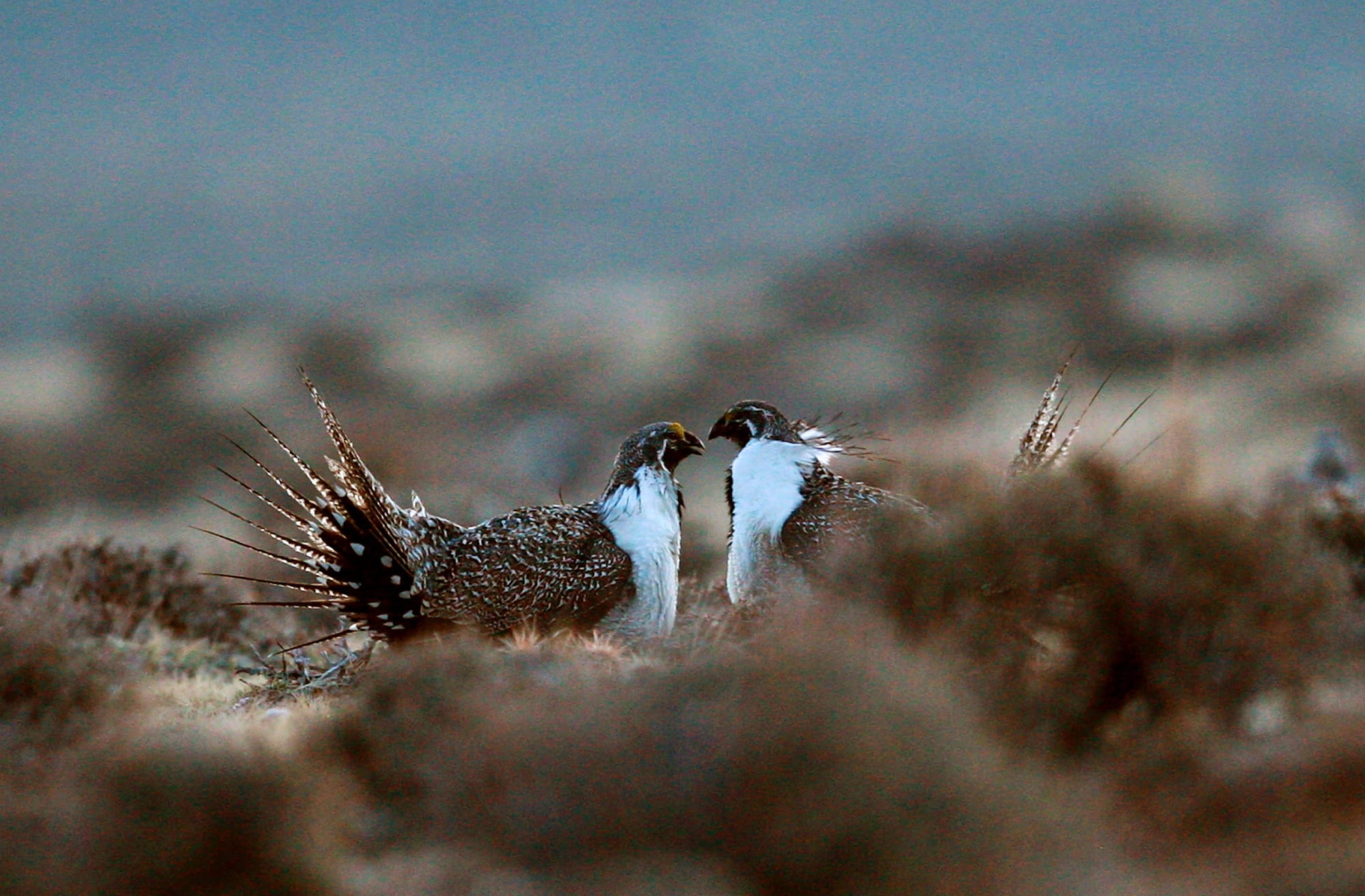CASPER, Wyo. — The federal government paid $236 million to landowners in 11 states to preserve sage grouse habitat amid a debate over whether the bird should be listed as an endangered species — potentially hindering energy development and ranching.
The Casper Star-Tribune reported Wednesday that the money was paid for conservation efforts on nearly 6,000 square miles, mostly in the West, over a four-year period.
The U.S. Department of Agriculture provided the numbers at the request of the Western Governors Association. That group argues the figures show that state and private efforts are more effective at preserving sage grouse than an endangered species designation would be.
“Western Governors believe that providing economic incentives for landowners to voluntarily participate in greater sage-grouse conservation efforts … is likely to achieve more efficient and cost-effective results, as well as more rapid conservation,” the group said on its website.
The governors association said participation in the program fell off steeply in California and Nevada after the U.S. Fish and Wildlife Service formally proposed listing a segment of the sage grouse population as endangered.
“It seems unlikely that landowners will want to participate in such voluntary programs when federal regulation is in place,” the group said.
Erik Molvar of the environmental group WildEarth Guardians disputed that the USDA program is helping, at least in Wyoming.
Sage grouse numbers in that state have fallen sharply since 2006, he said.
Wyoming Game and Fish reported in January that the number of sage-grouse males observed on “leks” — open areas where they do mating dances — fell from 44,500 in 2006 to around 18,000 in 2013.
“Tell me how throwing money at that is putting a dent in this massive decline,” Molvar said. “What we really need to do is stop destroying sage grouse habitat.”
The Fish and Wildlife Service is expected to announce next year whether the sage grouse should be listed as endangered.
The federal money for conservation on private land is distributed through the Sage Grouse Initiative of the Natural Resources Conservation Service, part of USDA.
The USDA said the spending totals covered four years starting in late 2010. The work included removing trees that had encroached on open areas, using grazing practices that preserve nesting cover, making fences more visible to help sage grouse avoid colliding with them and establishing conservation easements.
Wyoming was the biggest beneficiary, with landowners awarded $76.6 million for work on about 1,750 square miles.
The other states were California, $13.6 million, 640 square miles; Colorado, $24 million, 200 square miles; Idaho, $29.8 million, 790 square miles; Montana, $17.7 million, 810 square miles; Nevada, $35.6 million, 650 square miles; North Dakota, $2 million, 160 square miles; Oregon, $13.9 million, 260 square miles; South Dakota, $4.6 million, 395 square miles; Utah, $13.5 million, 200 square miles; and Washington, $4.9 million, 115 square miles.



